KUser
Appearance
 |
KUser è uno strumento per gestire utenti e gruppi sul tuo sistema |
Caratteristiche
- Aggiunta/modifica/rimozione utenti
- Aggiunta/modifica/rimozione gruppi
- Gestione password
Installazione
Kuser di solito non è installato in modo predefinito, deve quindi essere installato manualmente. KUser fa parte del pacchetto kdeadmin.
Una volta installato puoi trovarlo sotto il o avviarlo tramite KRunner keycap>(Alt+F2)</keycap> digitando
kuser
.
Utilizzare KUser
Avviato KUser si apre una finestra contenente due schede: e .
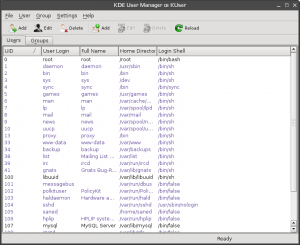
Utenti
Facendo doppio clic su un utente si apre una finestra di dialogo con diverse schede. Il numero delle schede è variabile a seconda del tipo di sistema di gestione degli utenti e se vengono utilizzate le quote.
Informazioni utente
- Per modificare le proprietà dell'utente come , , o impostare/cambiare una per esempio. Puoi anche .
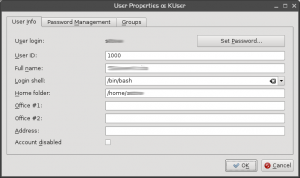
Gestione password
- Per cambiare le impostazioni della password come la validità temporale prima che debba essere cambiata o impostare una scadenza per l'account.
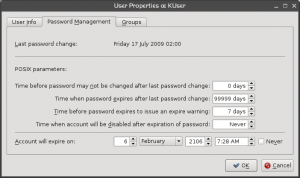
Gruppi
- Add or remove groups the user belongs to.
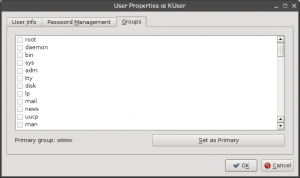
Groups
Double clicking a opens a dialog, where you can of the group and to/from a group.
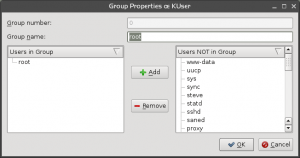
Configure KUser
Click and you can set up defaults for creating a new user:
General
- set the , the or the .
- choose if a will be created and if a (standard configuration files) will be copied to the home folder.
- set a , which creates a own personal group when a user is added and removes it, when the user is removed.
- set a .
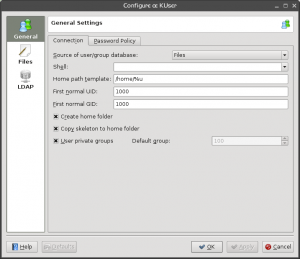
Files
- set default paths for password, group file, password shadow file and group shadow file.
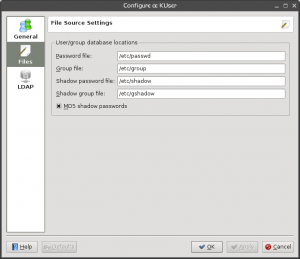
LDAP
- set preferences for users in a local network
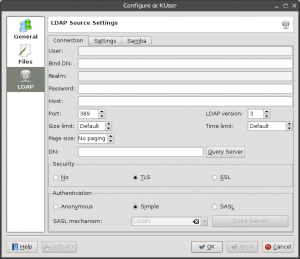
More Information
- KUser Manual (it is from KDE3 Days, but still valid)



